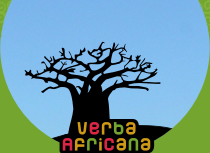Interview with Dr. Datey-Kumodzie. Video fragments and transcription
Some fragments of the interview are presented here: the self-presentation of the interviewee, Dr. Datey-Kumodzie, the part of the interview concerning the enactment of the migration stories in the Hogbetsotso festival, and the songs performed during the interview. A transcription of the fragments is offered in Pdf format. (If the fragments do not play, click here for possible solutions.)
Self presentation
As indicated in the Biographical Notes, Dr. Datey-Kumodzie lives in Accra and presents himself as the president of the Sofia Mission (African Mystery Systems of Religion and Science). At the beginning of the interview, the interviewee made it clear that he was a repository of a very special, secret knowledge that no other researcher could reveal and that he was worried about “people tapping and stealing” his knowledge. He then added that he needed to be careful because it was explosive (“volatile”) knowledge about the distorted history of the Ewes and how such distortions (contributed to) destroying the continent of Africa. Transcription.
“Hogbetsotso”
In this fragment Dr. Datey-Kumodzie recollects the historical migration of the Ewes and offers songs related to the festival. The organization of the Hogbetsotso festival is presented and interpreted as well as the dance and song enacting the migration stories (see his transcription and translation).
As indicated in the section ‘Modern’ construction of a myth of origin?, Dr. Datey-Kumodzie includes the Ewe migration in a creation story (by Mother Goddess, see the first song) and in a migration story of the Ewes that fertilizes human development and most civilisations of the world (not presented in the selected video fragments). Etymologies and historical developments presented in the interview do not always correspond to current academic research. According to linguistic research, for example, the term “ameba” and the Ewe term “hamu e ba” (‘person has come’) are unrelated philologically, whereas folk/popularizing etymology relies on the sound resemblance of the two forms to assert their correlation/derivation. The interview reconnects to the known oral migration stories when the ancient Ewes are said to migrate from Nigeria westward (from Ketu to Notsie in Togo). Dr. Datey-Kumodzie however adds another wave of migration from west to east, from ancient Ghana down through present day Gonja, Ashanti and Ga territories before crossing the Volta eastwards to the Anlo area. In this part of the interview, he claims that this was the route his family followed. Transcription.
Songs
The songs are performed and translated by Dr. Datey-Kumodzie in the interview according to his thesis and his manuscript Hu-Yehweh, The Eternal Wisdom of Africa. The translation and the example of a few transcriptions by Dr.
Datey-Kumodzie are offered here. A presentation of Ewe songs is offered in the Background Information.

